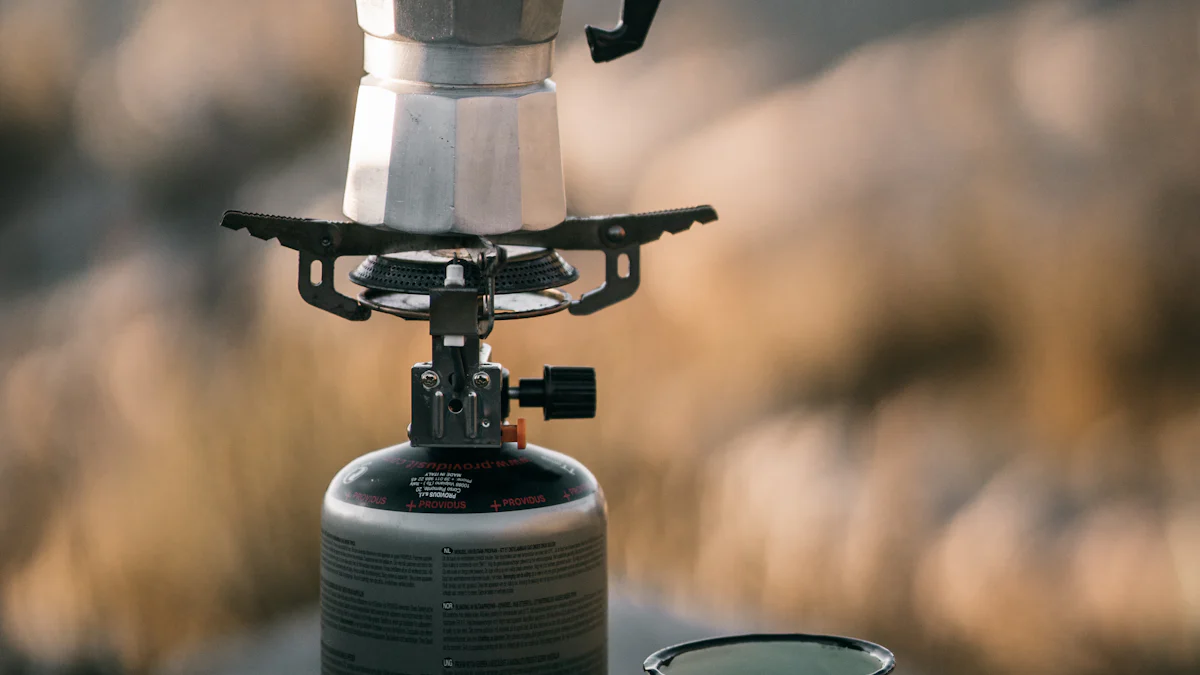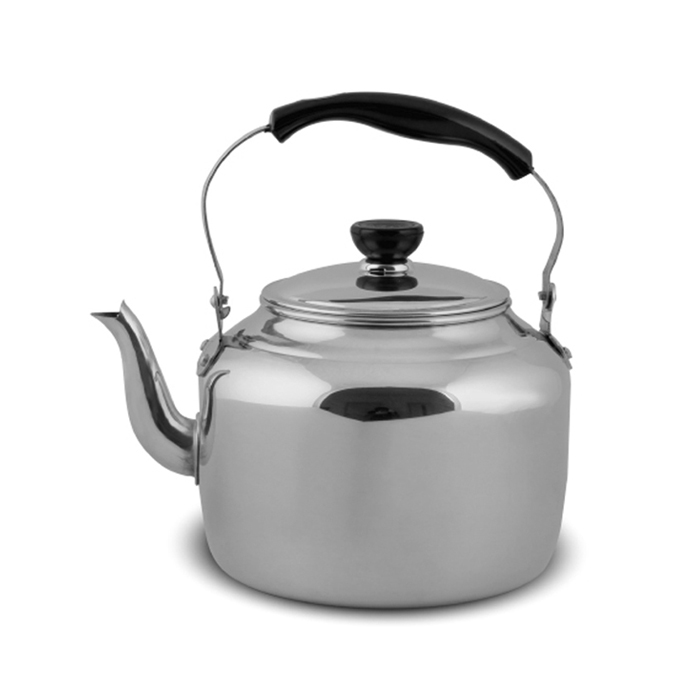Aluminio vs Neoksidebla ŝtalo: Kiu kaldrona tenilo estas pli bona?

Kiam vi elektas kaldronon, vi eble scivolas, kiu pritraktas materialon estas pli bona: aluminio aŭ neoksidebla ŝtalo. Ĉiu ofertas unikajn avantaĝojn. Pripensu faktorojn kiel fortikeco, varmo-kondukado, sekureco kaj kostefikeco. Aluminia kaldrono manipulas Excel en varmo -kondukado, igante ilin efikaj por rapida hejtado. However, stainless steel boasts superior durability with a tensile strength of 70,000 to 100,000 psi, compared to aluminum's 20,000 to 30,000 psi. Via elekto dependas de tio, kion vi taksas pli - rapide aŭ longeco. Kompreni ĉi tiujn diferencojn helpas vin fari informitan decidon.
Materiaj Propraĵoj
Kiam vi konsideras anAluminia Kettle -Tenilo, vi rimarkas ĝian malpezan naturon. Ĉi tio faciligas levi kaj verŝi, precipe kiam la kaldrono estas plena. La bonega termika konduktiveco de aluminio permesas varmon disvastiĝi rapide kaj egale. Ĉi tiu posedaĵo certigas, ke la tenilo restas sufiĉe malvarmeta por tuŝi, reduktante la riskon de brulvundoj. Tamen, aluminio estas pli milda ol neoksidebla ŝtalo, kio signifas, ke ĝi povas denti aŭ skrapi pli facile. Despite this, many manufacturers use anodized aluminum to enhance its durability and resistance to corrosion. Anodizing creates a protective layer on the surface, making the handle more robust and long-lasting.
In contrast, a stainless steel kettle handle offers superior strength and durability. Stainless steel's tensile strength ranges from 70,000 to 100,000 psi, significantly higher than aluminum's 20,000 to 30,000 psi. This strength makes stainless steel handles less prone to bending or breaking under pressure. Aldone, neoksidebla ŝtalo rezistas korodon pli bone ol aluminio, danke al ĝia enhavo de kromo. This resistance ensures that your kettle handle maintains its appearance and functionality over time. While stainless steel is heavier, its durability and sleek appearance often make it a preferred choice for those seeking longevity and style in their kitchenware.
Kiam vi elektas aluminian kaldronon, vi profitas de ĝia bonega varmo -kondukado. Aluminio kondukas varmon multe pli efike ol neoksidebla ŝtalo. This property allows the kettle to heat up quickly, saving you time when boiling water. The rapid heat distribution ensures that the handle remains cooler to the touch, reducing the risk of burns. This feature makes aluminum a popular choice for those who prioritize speed and efficiency in their kitchen tasks. However, remember that while aluminum excels in heat conduction, it may not retain heat as long as stainless steel.
In contrast, a stainless steel kettle handle offers different thermal properties. Stainless steel has one of the lowest thermal conductivities among metal alloys. This means it does not conduct heat as quickly as aluminum. While this might seem like a disadvantage, it actually provides a benefit. The slower heat conduction ensures that the handle stays cooler for longer periods, enhancing safety when handling the kettle. Additionally, stainless steel retains heat better, which can be advantageous if you need to keep the water warm for extended periods. Ĉi tiu trajto faras neoksideblan ŝtalon preferata elekto por tiuj, kiuj taksas sekurecon kaj varmegan retenadon super rapida hejtado.
Daŭreco
When considering the durability of an aluminum kettle handle, you find that it offers a balance between strength and weight. Aluminum is inherently lightweight, which makes it easy to handle and reduces strain during use. However, its softer nature compared to stainless steel means it can be more susceptible to dents and scratches. Manufacturers often enhance aluminum's durability by anodizing it, creating a protective layer that increases resistance to wear and corrosion. Ĉi tiu procezo ne nur plilongigas la vivdaŭron de la tenilo, sed ankaŭ subtenas sian aspekton kun la tempo. Despite these enhancements, aluminum handles may still require more care to avoid damage from rough handling or impacts.
En kontrasto, neoksidebla ŝtala kaldrono provizas esceptan fortikecon. Stainless steel's high tensile strength ensures that it withstands significant pressure without bending or breaking. This robustness makes it an ideal choice for those who prioritize longevity in their kitchenware. Additionally, stainless steel's resistance to corrosion further enhances its durability, allowing it to maintain its structural integrity and aesthetic appeal over time. The material's recyclability also contributes to its long-term value, as it supports sustainability and energy savings. While stainless steel handles are heavier, their durability and resistance to wear make them a reliable option for everyday use.
Sekureco
When you consider safety, aluminum kettle handles offer several advantages. Aluminum's excellent heat conduction ensures that the handle remains cool to the touch, minimizing the risk of burns. Ĉi tiu funkcio estas aparte utila kiam vi bezonas verŝi varman akvon rapide. Tamen, la pli milda naturo de aluminio signifas, ke ĝi povas deformiĝi sub troa premo, eble kompromitante sekurecon se ne pritraktita kun zorgo. Anodigitaj aluminiaj teniloj provizas aldonan tavolon de protekto, plibonigante sian reziston al eluziĝo. Ĉi tiu procezo ne nur fortigas la tenilon, sed ankaŭ reduktas la verŝajnecon de akraj randoj formiĝantaj de skrapoj aŭ dentoj. Ĉiam certigu, ke laKettle Spare Parts
Stainless steel kettle handles prioritize safety through their robust construction. The material's high tensile strength ensures that the handle remains intact even under significant stress. This durability reduces the risk of the handle breaking or bending during use. Stainless steel's lower thermal conductivity compared to aluminum means the handle stays cooler for longer, further enhancing safety when handling hot liquids. Additionally, stainless steel's resistance to corrosion ensures that the handle maintains its structural integrity over time, preventing potential hazards from weakened materials. Por optimuma sekureco, regule kontrolu la ligilon de la tenilo al la kaldrono kaj certigu, ke ĝi restos sekura.
Kostefikeco
Kiam vi konsideras la kostefikecon de aluminia kaldrono, vi trovas ĝin kiel buĝeta opcio.Aluminiaj teaj kaldronojare generally more affordable than their stainless steel counterparts. Ĉi tiu alirebleco devenas de la vasta havebleco kaj uzo de aluminio en produktado de kuiriloj. You can often find aluminum kettles at a fraction of the price of stainless steel ones, making them an attractive choice if you're looking to save money. Additionally, aluminum's excellent heat conduction means your kettle will heat up quickly, which can save energy and reduce utility costs over time. However, keep in mind that while aluminum is less expensive, it may require more frequent replacement due to its susceptibility to dents and scratches.
En kontrasto, neoksidebla ŝtala kaldrono reprezentas pli signifan komencan investon. Stainless steel kettles tend to cost more due to the material's strength and durability. Despite the higher upfront cost, you might find that a stainless steel kettle offers better long-term value. Its robust construction means it is less prone to damage, reducing the need for frequent replacements. Additionally, stainless steel's resistance to corrosion ensures that your kettle maintains its appearance and functionality over time. If you prioritize longevity and are willing to invest more initially, a stainless steel kettle handle could prove to be a cost-effective choice in the long run.
Ningbo Xianghai Kitchareestas profesia en ĉi tiu areo de produktadoKaj. The factory has advanced equipment, efficient assembly line production system, experienced workers, as well as diversified product types and broad sales market. We are committed to providing customers with quality products and satisfactory service, and constantly strive for excellence.
Afiŝotempo: Dec-18-2024

